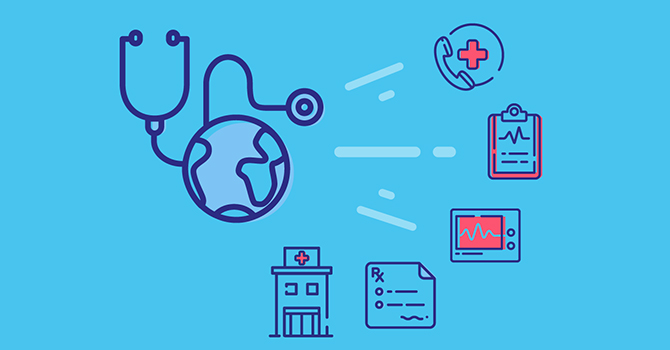A Comprehensive Overview on Just How Medical Care RCM Works to Simplify Billing and Collections
Browsing the intricacies of healthcare revenue cycle administration (RCM) is vital for providers aiming to improve their payment and collections procedures. The overview unpacks the ins and outs of RCM, from client registration to receivables management, supplying insights right into maximizing each step. Incorporating advanced modern technology and standard procedures can dramatically decrease insurance claim denials and speed up payment cycles. Yet, real difficulty hinges on seamlessly combining these elements to improve capital. As we explore the core elements and approaches that drive effectiveness, one concern continues to be: exactly how can health care entities best placement themselves to thrive monetarily in an ever-evolving sector?
Comprehending Profits Cycle Administration
RCM is an important management feature that encompasses the whole economic procedure of patient treatment, from the initial visit establishing to the last settlement of the equilibrium. It is a complicated treatment created to determine, accumulate, and take care of the revenue from the solutions supplied to individuals.
The RCM process begins when a person schedules a visit and expands with the client's care trip, consisting of billing and collections. A vital purpose is to minimize the time in between getting and providing a service payment, hence boosting the company's economic health and wellness. RCM involves numerous functions such as person enrollment, insurance coverage confirmation, fee capture, coding, asserts entry, repayment uploading, and handling allures and denials.
Secret Parts of RCM
In the world of Earnings Cycle Monitoring (RCM), comprehending its essential parts is basic to accomplishing monetary performance within medical care organizations. RCM is a thorough process that includes different phases, each essential to guaranteeing reliable billing and collections. The main components include individual registration, insurance verification, fee capture, coding, insurance claim entry, repayment publishing, and balance due monitoring.


When coded, cases are sent to payers, where precision is extremely important to stay clear of beings rejected or hold-ups - Healthcare RCM. Settlement publishing entails recording the received repayments, which enables for the reconciliation of accounts. Finally, accounts receivable administration concentrates on tracking and attending to overdue cases, making certain prompt follow-up and resolution
Each part of RCM is adjoined, and inadequacies in any type of part can interrupt the entire cycle. As a result, grasping these aspects is necessary for doctor to maximize profits and improve their monetary health.
Techniques for Effective Billing

Systematizing billing procedures across the company is one more essential method. Developing clear guidelines for documentation, coding, and entry aids keep uniformity and compliance with regulative needs. Training team routinely site here on these treatments makes certain everybody is up-to-date with the current changes in billing codes and payer plans.
Accurate cost capture is necessary in protecting against income leak. Applying routine audits and surveillance systems enables for the recognition and adjustment of disparities prior to they influence earnings. Furthermore, preserving open lines of interaction with payers aids to promptly fix any disputes or misconceptions that might occur.

Lastly, interesting patients early in the payment procedure by offering clear estimates and academic products concerning their monetary obligations can significantly reduce confusion and improve settlement timeliness. These strategies jointly add to a more economically healthy and balanced and effective invoicing system.
Enhancing Collections Processes
Given the intricacies of clinical invoicing and the variety of payer needs, improving the collections process includes executing strategic measures that ensure timely and exact repayment of solutions made. Automation devices can aid in tracking case standings, sending out prompt reminders to clients, and managing rejections extra properly.
Clear and clear client communications are vital. Supplying thorough descriptions of fees and supplying flexible payment plans can raise individual complete satisfaction and prompt payments.
Routine audits of the collections procedure must be conducted to identify locations for improvement and make sure conformity with guidelines. By examining information, health care organizations can identify patterns, prepare for potential concerns, and adapt strategies as necessary (Healthcare RCM). Ultimately, a well-enhanced collections process not only supports economic health yet additionally contributes to an extra seamless experience for individuals and staff alike
Optimizing Earnings Streams
Building upon the foundation of a solid collections process, medical care organizations can additionally bolster their economic stability by purposefully optimizing income streams. This includes a multi-faceted approach, beginning with a comprehensive analysis of existing profits sources to recognize inefficiencies and areas for growth. Using advanced data analytics tools allows companies to gain understandings right into payer mix, person try this web-site demographics, and solution application patterns, enabling data-driven choices that boost earnings capture.
Implementing automated invoicing systems can considerably minimize mistakes and accelerate cases refining, ensuring that revenue is accumulated extra efficiently. Additionally, optimizing payer contracts with routine arrangements can enhance repayment rates and terms, straight influencing the lower line. Diversifying solution offerings, such as incorporating telehealth or health care, can likewise draw in a wider person base, hence raising profits capacity.
One more essential part is boosting client interaction and satisfaction, as satisfied people are extra likely to stick to treatment strategies and make timely payments. Providing versatile settlement choices and transparent invoicing methods can improve collections and foster person loyalty. Healthcare RCM. By adopting these techniques, healthcare companies can produce a more resilient economic framework, making certain sustained growth and stability in an ever-changing moved here market landscape
Conclusion
Finally, medical care Earnings Cycle Administration (RCM) plays a vital role in maximizing invoicing and collections procedures by integrating crucial parts such as client registration, insurance confirmation, fee capture, coding, claims entry, and accounts receivable administration. By using sophisticated technology, systematizing treatments, and fostering client engagement, doctor can significantly reduce case denials, speed up settlement cycles, and boost capital. This comprehensive method to RCM inevitably causes improved monetary performance and sustainability for medical care companies.
The RCM procedure begins when a client schedules an appointment and prolongs through the person's care trip, consisting of payment and collections.One more crucial part is improving individual involvement and satisfaction, as pleased people are more likely to adhere to therapy strategies and make prompt payments. Offering flexible settlement options and transparent billing practices can boost collections and foster patient loyalty.In conclusion, medical care Revenue Cycle Administration (RCM) plays a crucial role in maximizing invoicing and collections procedures by incorporating vital elements such as individual registration, insurance coverage verification, fee capture, coding, claims submission, and accounts receivable management. By employing advanced modern technology, systematizing procedures, and promoting client engagement, medical care companies can substantially decrease claim denials, speed up payment cycles, and boost money flow.